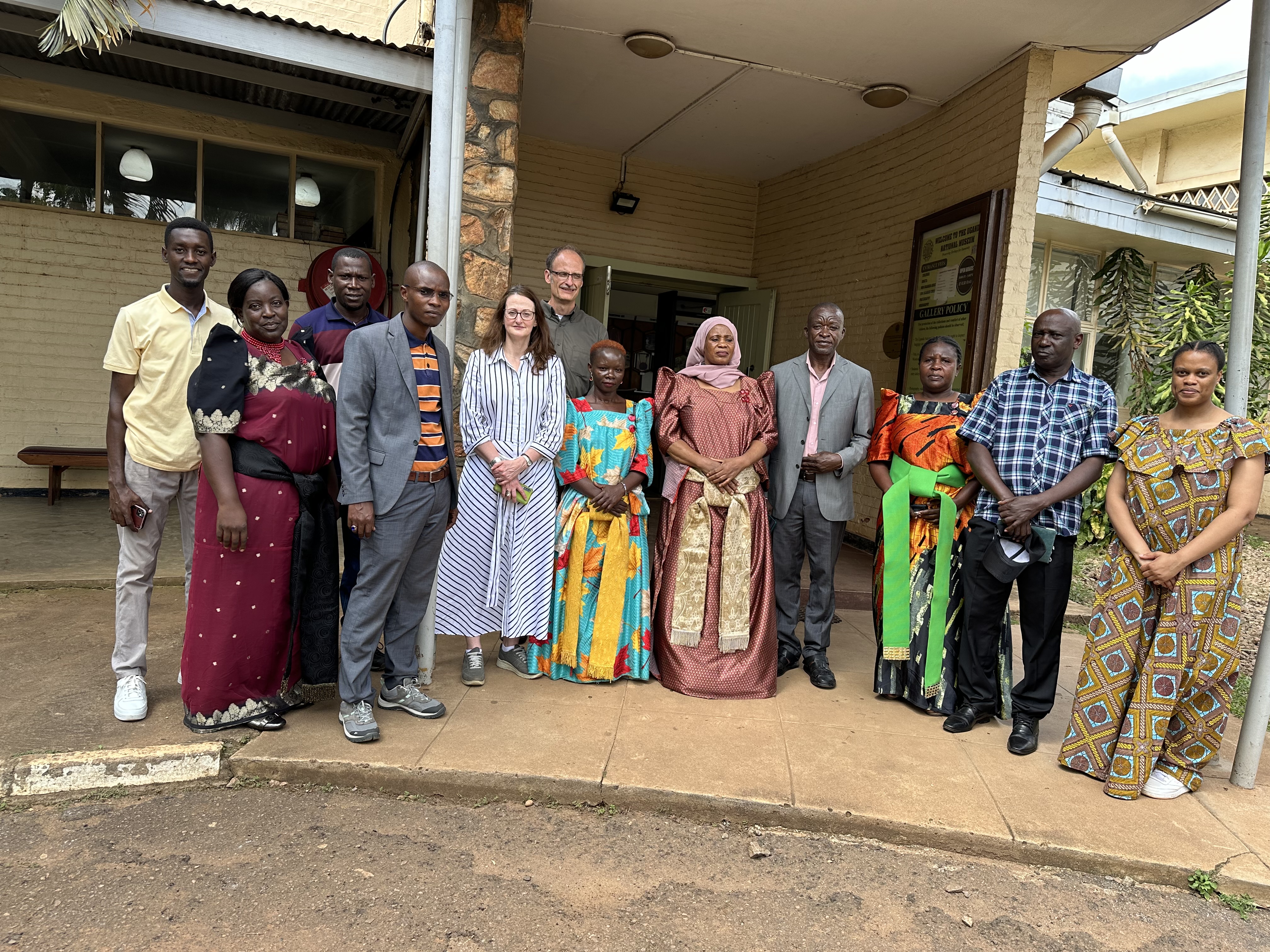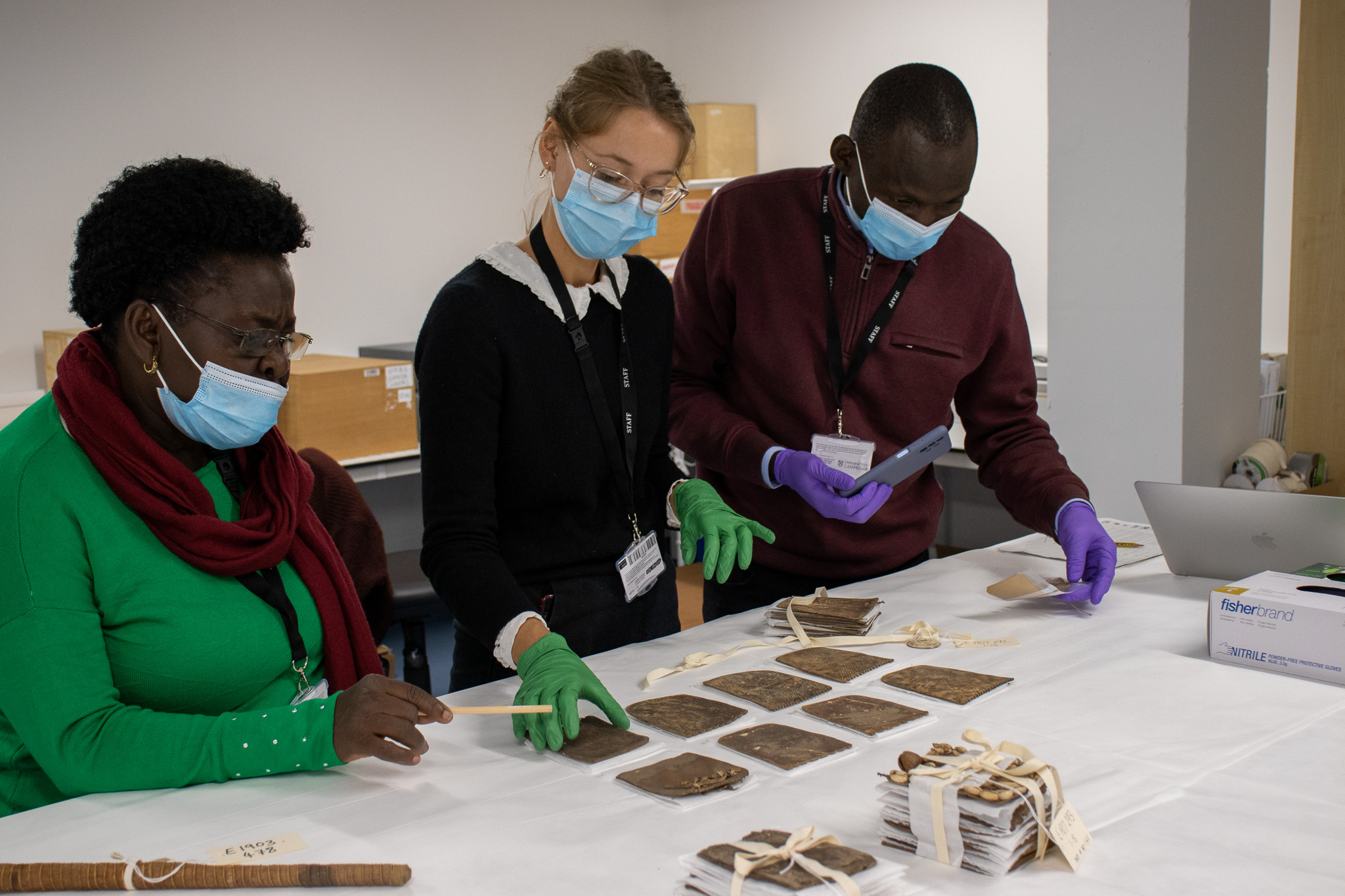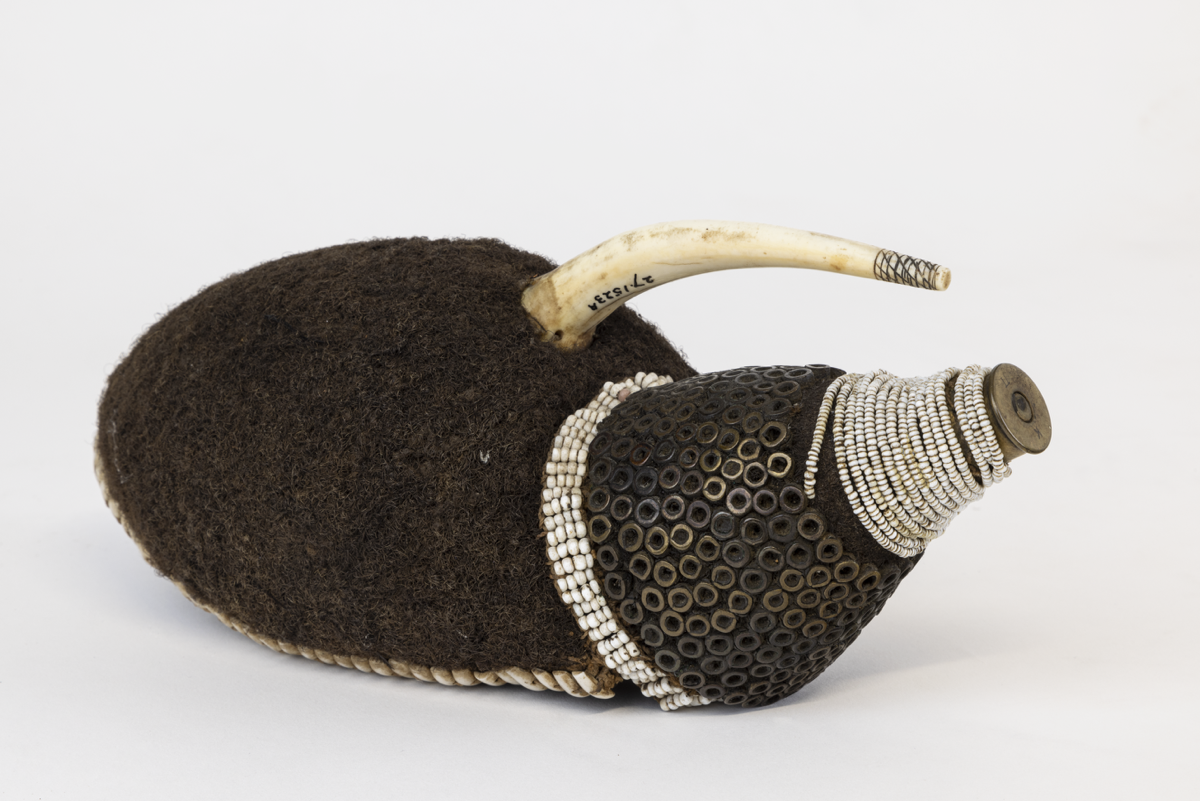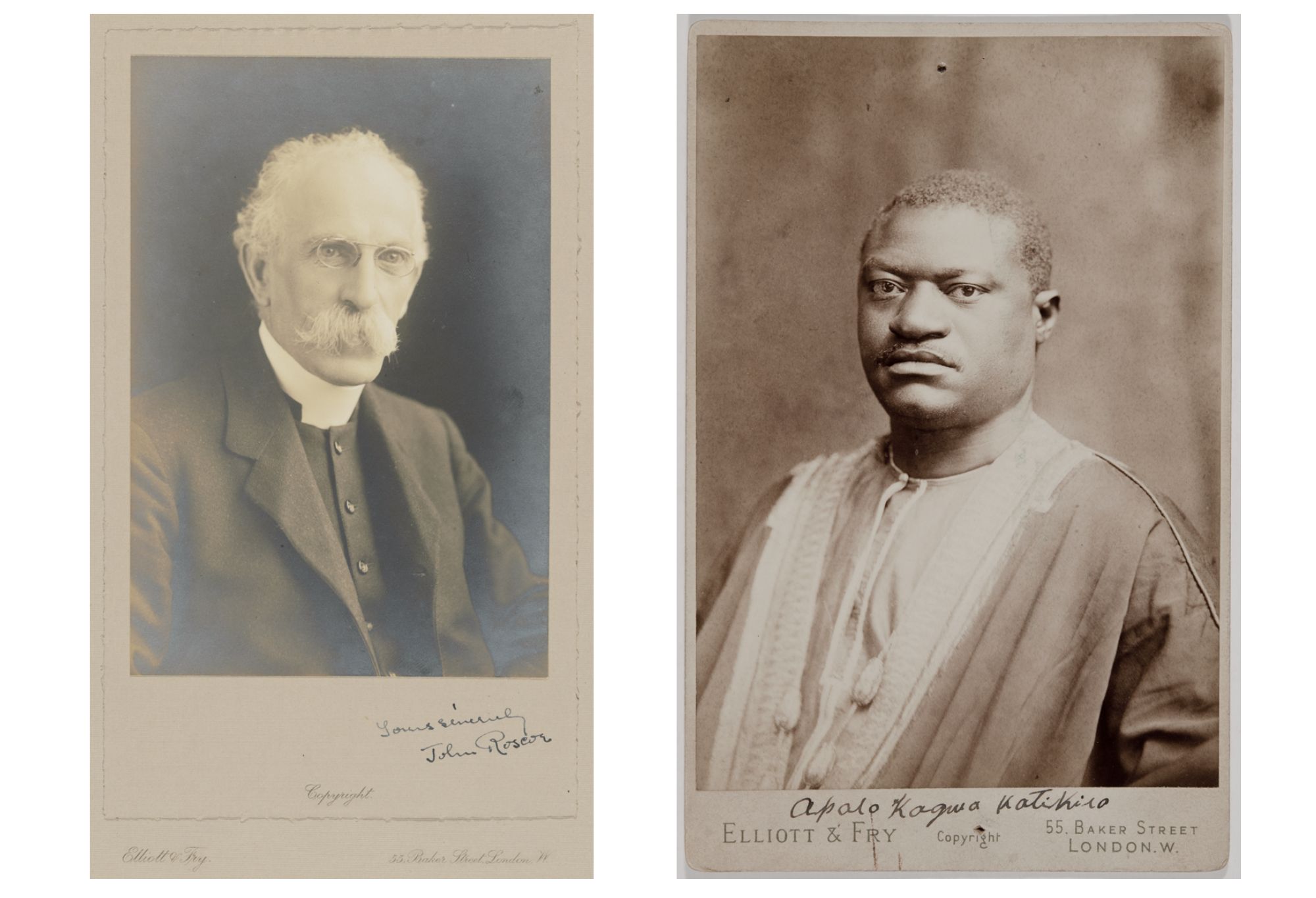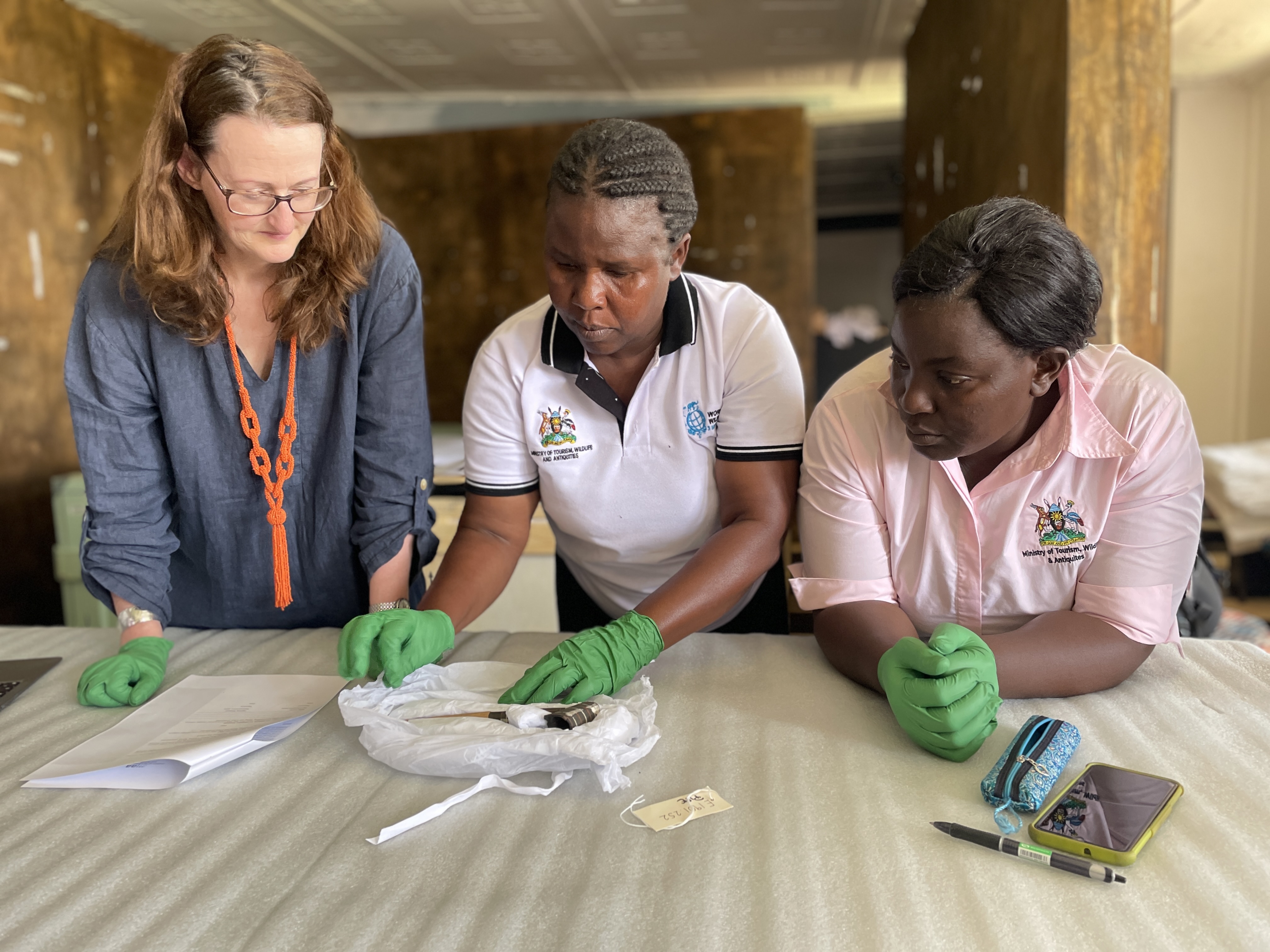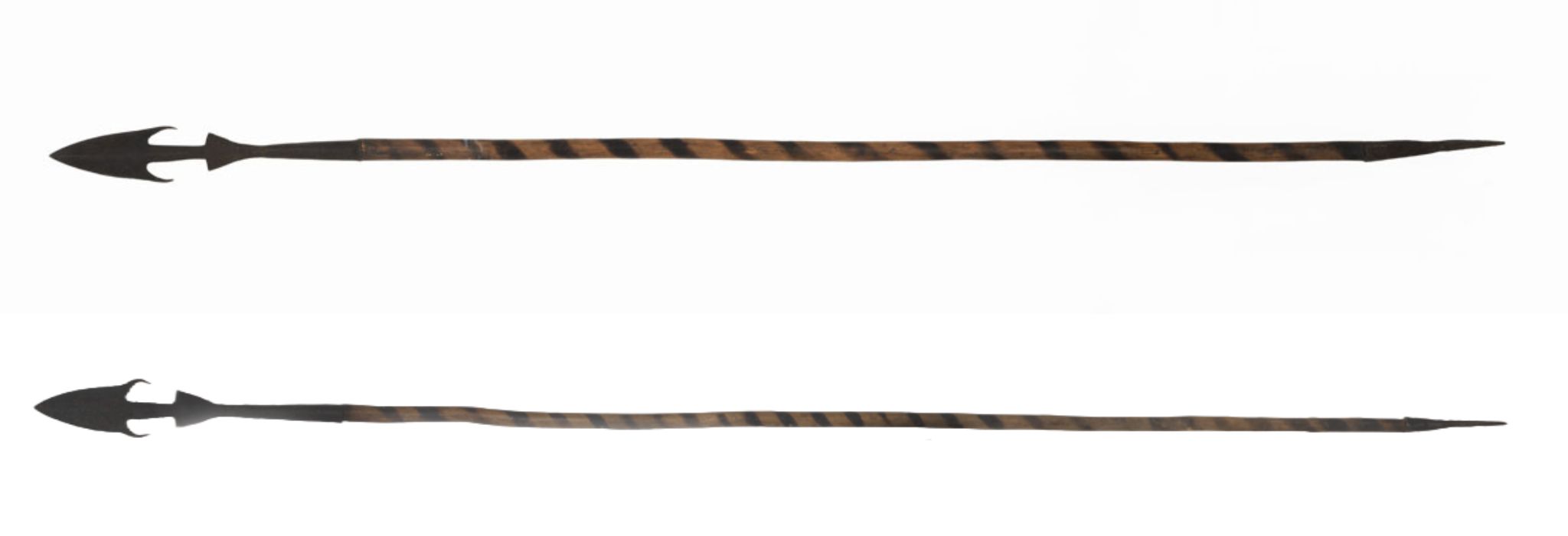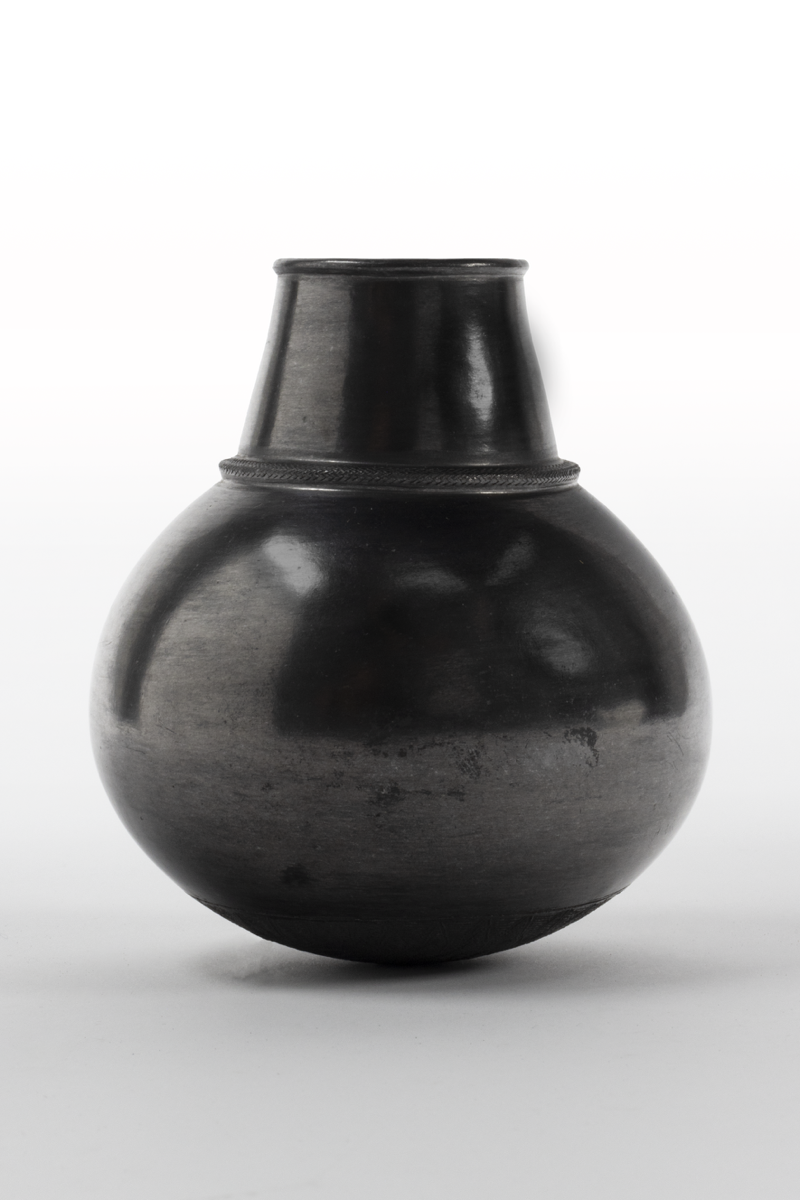On the afternoon of Saturday 8 June 2024, MAA staff arrived in Entebbe airport with 32 objects from the communities and kingdoms of Uganda that have been in the collections in Cambridge for a century or more.
Staff from the Uganda Museum, MAA, the University of Michigan and the Wamala Tombs at the Uganda Museum, 13 June 2024.
MAA is delighted to be a partner in this pioneering project to return artefacts from the collections in Cambridge to the Uganda Museum: to place these important artefacts of the cultural heritage into the hands of people in this country, for a programme of community research and an exhibition in 2026, led by a reinvigorated Uganda Museum.
The programme is part of the Repositioning the Uganda Museum project, generously supported by the Andrew W. Mellon Foundation and led by Professor Derek Peterson at the University of Michigan. Additional support for MAA’s involvement of the project has been provided by the AHRC IAA Rapid Response Fund and the UKRI Participatory Fund.
Travelling with the artefacts were seven balongo, the sacred remains of royal ancestors from the Buganda Kingdom. The Uganda Museum is supporting the transfer of these relics to the custodianship of the keepers of the Wamala Tombs, where they may be cared for appropriately.
Rose Mwanja Nkaale, formerly Commissioner for Museums and Monuments, Adebo Nelson Abiti, Principal Curator, Uganda Museum, and Louise Puckett of MAA examining a set of ngato, leather divination cards, from Buganda ( MAA ROS 1920.479.1-8) at MAA’s Centre for Material Culture in November 2022.
The artefacts that have returned to Kampala were chosen by colleagues from the Uganda Museum following a research visit to Cambridge in November 2022. They were selected to highlight diverse aspects of Ugandan history, and to be representative of different communities: Kingdoms and peoples represented in the collection include Acholi, Ankole, Baganda, Bahima, Bakedi, Banyoro and Teso.
Headband of glass beads worn by priests of the god Wamala, Bahima/Ankole People. Collected by John Roscoe. MAA E 1907.222.
There is much work to be done to understand how these objects came to be taken out of Uganda, some more than a century ago, and to reconnect them with the people who owned and identified with them.
Ornament of human hair. Acholi People. Collected and donated by Frank H. Rogers. Given to him by Olia, chief of the village of Atiak. MAA 1927.1523 A.
These artefacts were acquired in various ways: through confiscation, conversion, theft, gift and purchase. Most were brought by the Anglican missionary Reverend John Roscoe. But several were donated to the Museum by Apolo Kaggwa (sometimes spelled Apollo Kagwa), the Katikiro (Prime Minister) of the Kingdom of Buganda.
Reverend John Roscoe, Anglican missionary with the Church Mission Society in Uganda, 1894-1909. Photograph by Elliott & Fry, London. MAA P.145639.MUS.
Sir Apolo Kaggwa, Katikiro (Prime Minister) of the Kingdom of Buganda. Photograph by Elliott & Fry, London. MAA P.143766.ACH2.
Other donors include British colonial officials Sir Harry Hamilton Johnston, Ernest Balfour Haddon, Frank Rogers, and John Gilbert Rubie, and Anglican Missionary Arthur Bryan Fisher.
Ernest Balfour Haddon, Irish-born British colonial administrator in Uganda, 1905-1945, and an unnamed man holding elephant tusks. MAA N.59174.EBH
As well as provenance research, there is also much work to be done to understand the significance of, and claims to, these artefacts today, for people across this country. It is fitting that this work be led by colleagues in Uganda. For this reason, these artefacts are coming to the Uganda Museum to facilitate research and discussion on their history and contemporary significance, and to inform decisions on how and where they are best cared for. We hope and trust that this is the beginning of a new future for these objects, in Uganda, accessible to the people for whom they are most valuable.
Rachel Hand, Collections Manager for Anthropology at MAA, with Solomy Nansubuga and Alice Nanyombi assessing the condition of returned artefacts on arrival at the Uganda Museum, 10 June 2024
The artefacts are returning, in the first instance, on loan to the Uganda Museum, to support the development of a more equitable future for the collection, in the hands of Ugandan people. Loans between institutions have long been an established mechanism for making collections accessible to communities and audiences in different countries, and in this case it will allow all stakeholders to contribute to decisions on the future of these artefacts. Loans are not alternatives to restitution, but they can be stepping towards on the path towards it.
Two spears, taken in warfare from the Teso and Bakedi people and dedicated to the deity Lubare by the Baganda. Teso/Bakedi/Baganda People. Collected and donated by John Roscoe. MAA ROS 1920.245, MAA Z 1650
We at MAA look forward to supporting the work of the Uganda Museum and partners to research the histories and contemporary significance of these objects, and to inform decisions about their future care.
Ceramic milk bottle. Banyoro people. Collected and donated by John Roscoe. MAA ROS 1920.159.
A full list of items returned to Uganda from MAA as part of this project is available to download.
The Anthropology collections at MAA include 1500 artefacts from Uganda, of which over 93% have images online. The MAA Online Catalogue includes over 185,000 catalogue records for objects from across the world, of which over 55% currently have images. Full descriptions, details of provenance and context, and additional images may be accessed for each artefact.
The team that travelled from Cambridge included:
Dr Mark Elliott, Senior Curator in Anthropology, Museum of Archaeology and Anthropology
Rachel Hand, Collections Manager (Anthropology), Museum of Archaeology and Anthropology
Dr Eva Namusoke, Senior Curator, African Collections Futures, The Fitzwilliam Museum


